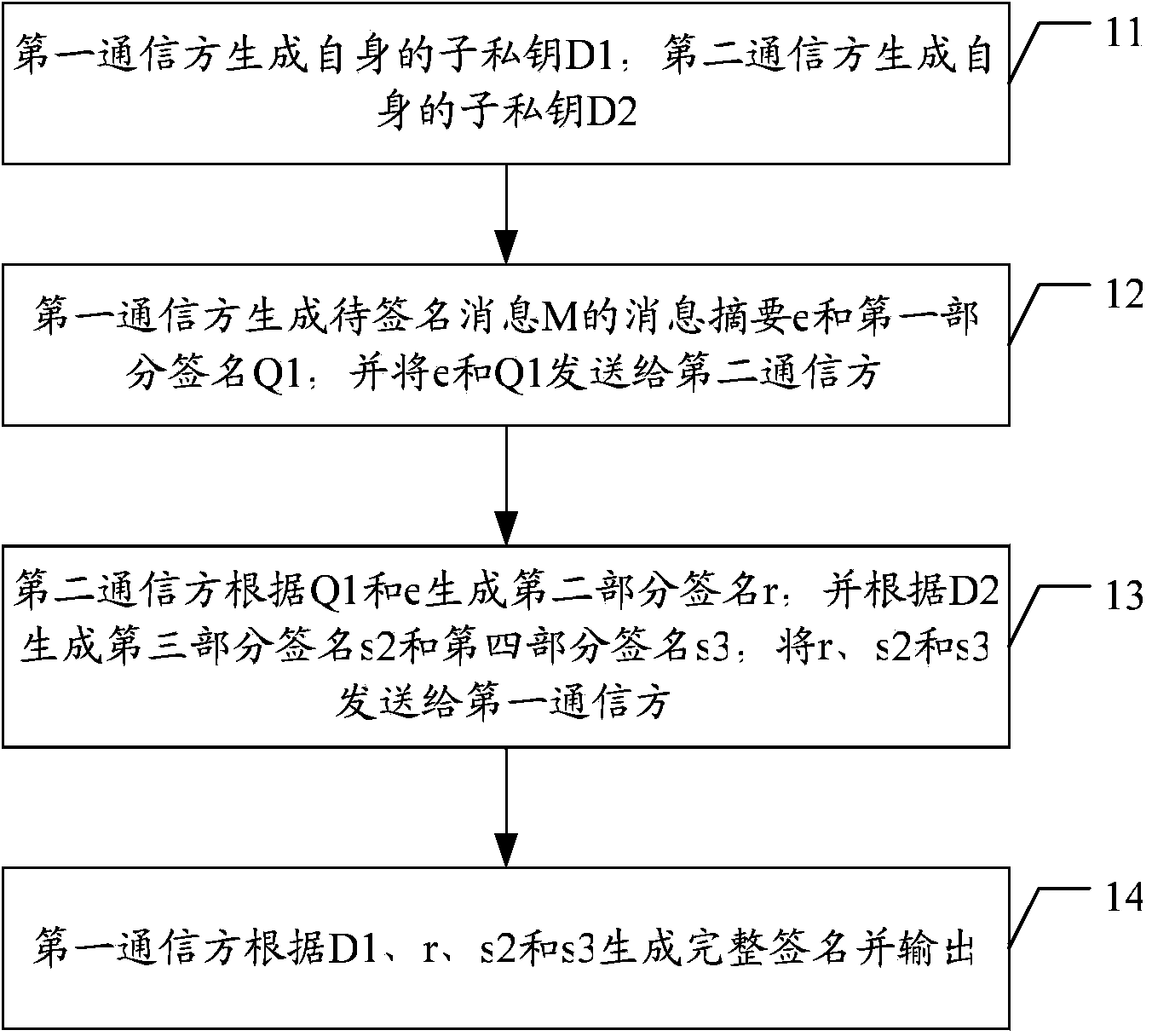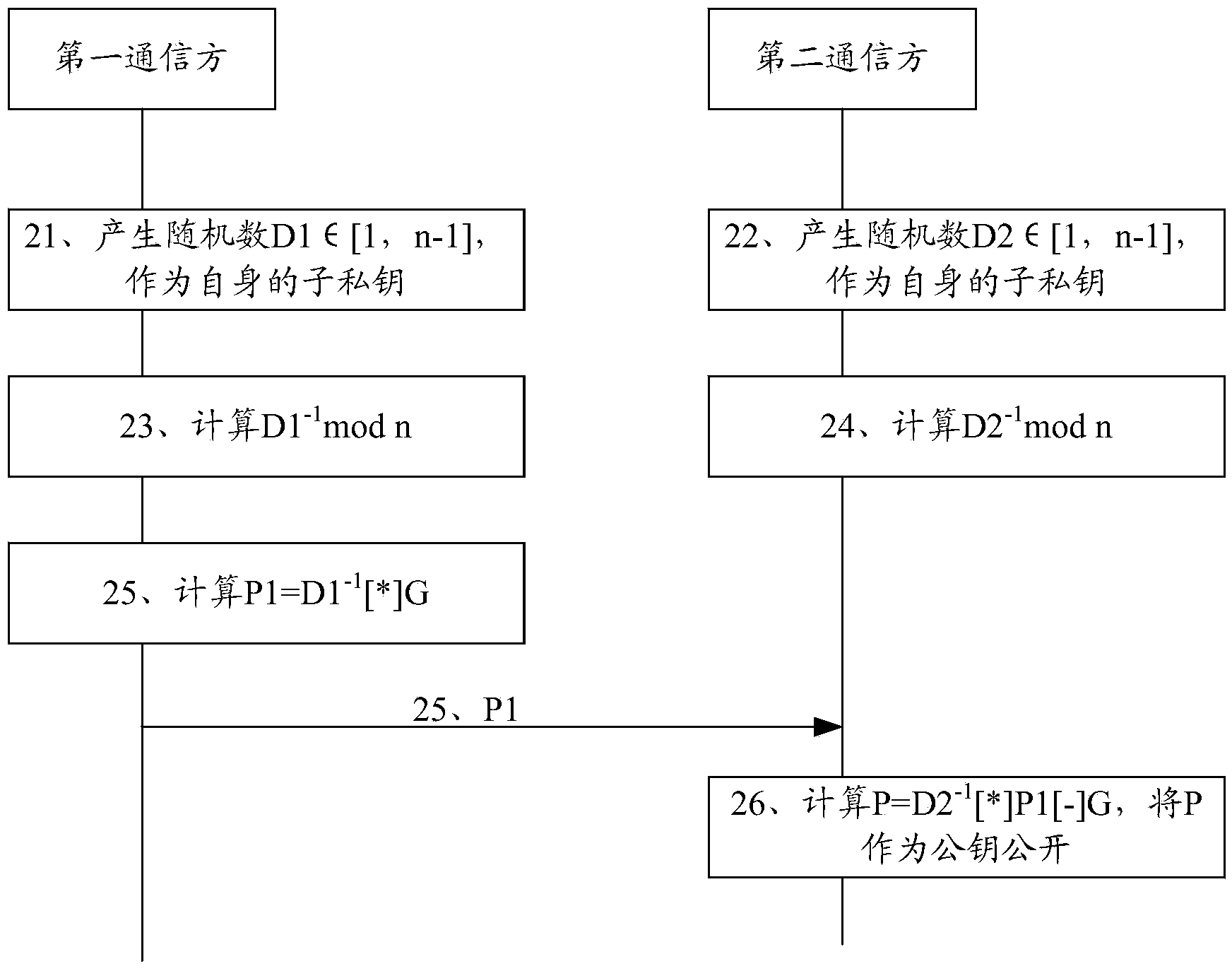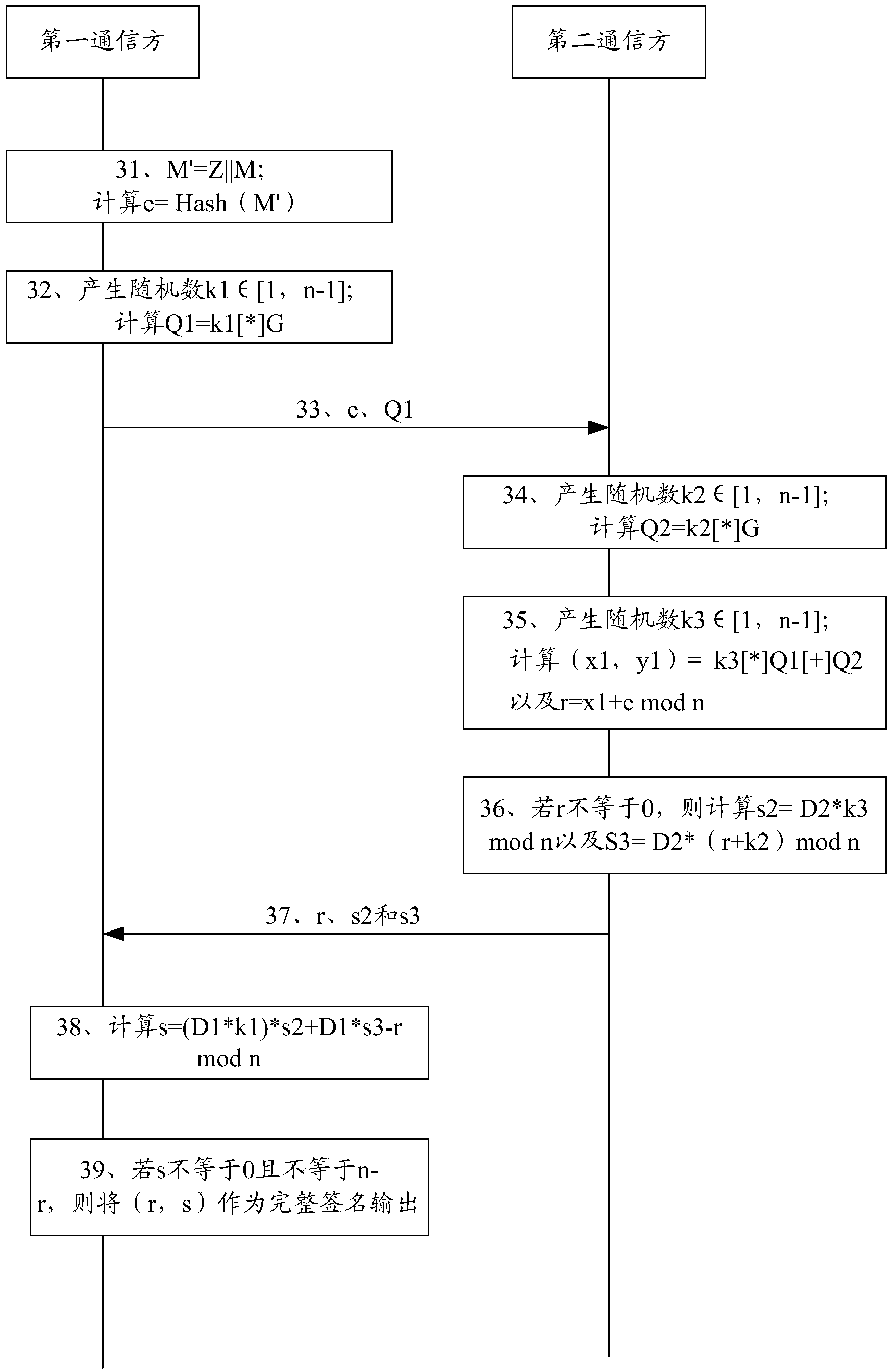Signing and decrypting method and system applied to cloud computing and based on SM2 algorithm
A cloud computing and algorithm technology, applied in the field of cryptography, can solve problems such as the inability to meet the low-latency application requirements of the cloud computing environment, the inapplicability of the cloud computing environment, and the large number of communications, and achieve a solution with less application requirements, low latency, and improved security. Effect
- Summary
- Abstract
- Description
- Claims
- Application Information
AI Technical Summary
Problems solved by technology
Method used
Image
Examples
Embodiment Construction
[0030] Aiming at the problems existing in the prior art, the present invention proposes a SM2 algorithm-based signature scheme and decryption scheme suitable for cloud computing environments. The SM2 algorithm is a standard commercial cryptographic algorithm, which is widely supported and used in cryptographic products.
[0031] In order to make the technical solution of the present invention more clear and understandable, the solution of the present invention will be further described in detail below with reference to the accompanying drawings and examples.
[0032] figure 1 It is a flow chart of an embodiment of the SM2 algorithm-based signature method applicable to cloud computing in the present invention, such as figure 1 As shown, the following steps 11-14 are included.
[0033] Step 11: The first communication party generates its own sub-private key D1, and the second communication party generates its own sub-private key D2.
[0034] For the convenience of expression,...
PUM
 Login to View More
Login to View More Abstract
Description
Claims
Application Information
 Login to View More
Login to View More - R&D
- Intellectual Property
- Life Sciences
- Materials
- Tech Scout
- Unparalleled Data Quality
- Higher Quality Content
- 60% Fewer Hallucinations
Browse by: Latest US Patents, China's latest patents, Technical Efficacy Thesaurus, Application Domain, Technology Topic, Popular Technical Reports.
© 2025 PatSnap. All rights reserved.Legal|Privacy policy|Modern Slavery Act Transparency Statement|Sitemap|About US| Contact US: help@patsnap.com



